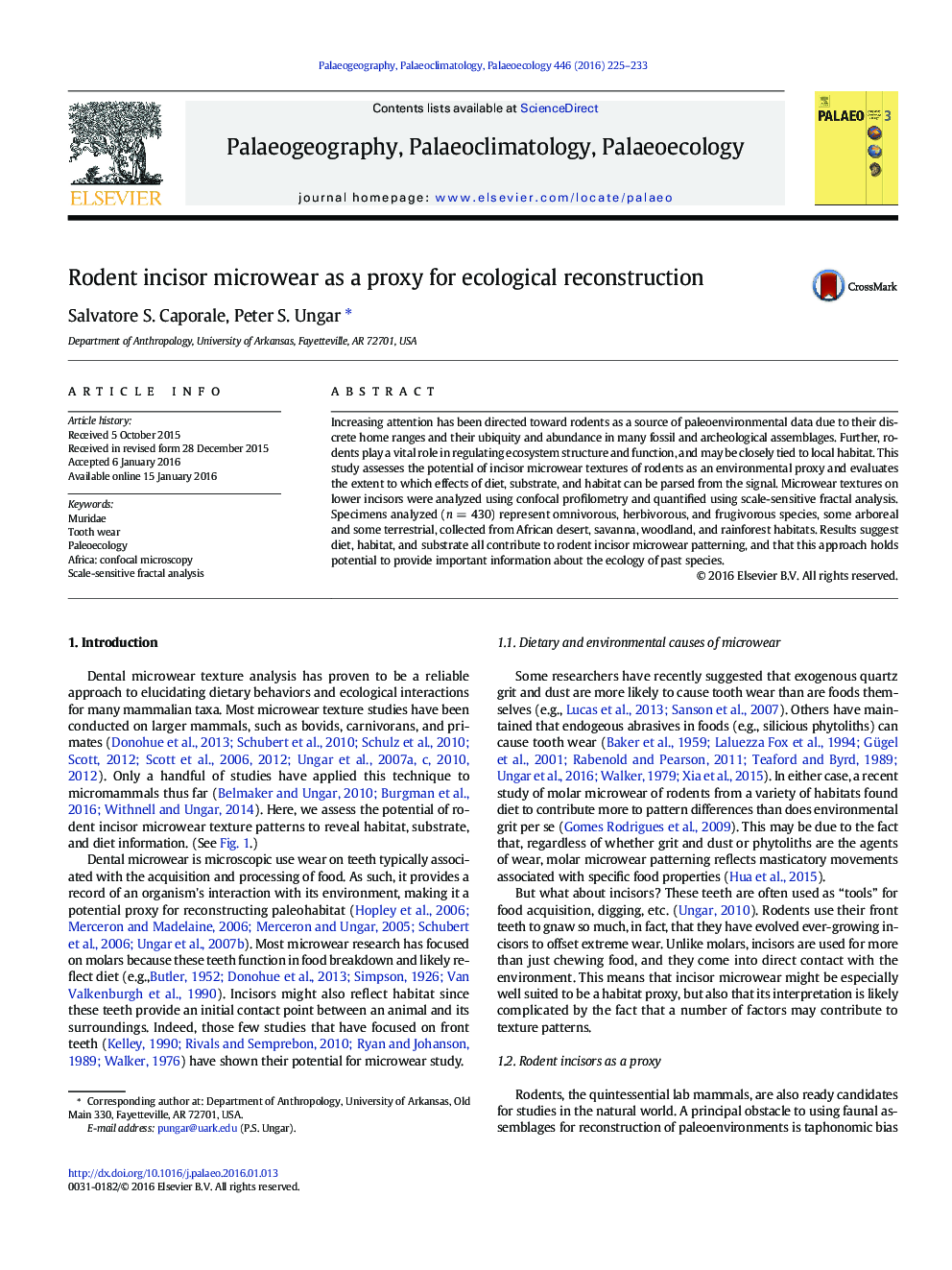| Article ID | Journal | Published Year | Pages | File Type |
|---|---|---|---|---|
| 6349434 | Palaeogeography, Palaeoclimatology, Palaeoecology | 2016 | 9 Pages |
Abstract
Increasing attention has been directed toward rodents as a source of paleoenvironmental data due to their discrete home ranges and their ubiquity and abundance in many fossil and archeological assemblages. Further, rodents play a vital role in regulating ecosystem structure and function, and may be closely tied to local habitat. This study assesses the potential of incisor microwear textures of rodents as an environmental proxy and evaluates the extent to which effects of diet, substrate, and habitat can be parsed from the signal. Microwear textures on lower incisors were analyzed using confocal profilometry and quantified using scale-sensitive fractal analysis. Specimens analyzed (n = 430) represent omnivorous, herbivorous, and frugivorous species, some arboreal and some terrestrial, collected from African desert, savanna, woodland, and rainforest habitats. Results suggest diet, habitat, and substrate all contribute to rodent incisor microwear patterning, and that this approach holds potential to provide important information about the ecology of past species.
Related Topics
Physical Sciences and Engineering
Earth and Planetary Sciences
Earth-Surface Processes
Authors
Salvatore S. Caporale, Peter S. Ungar,
